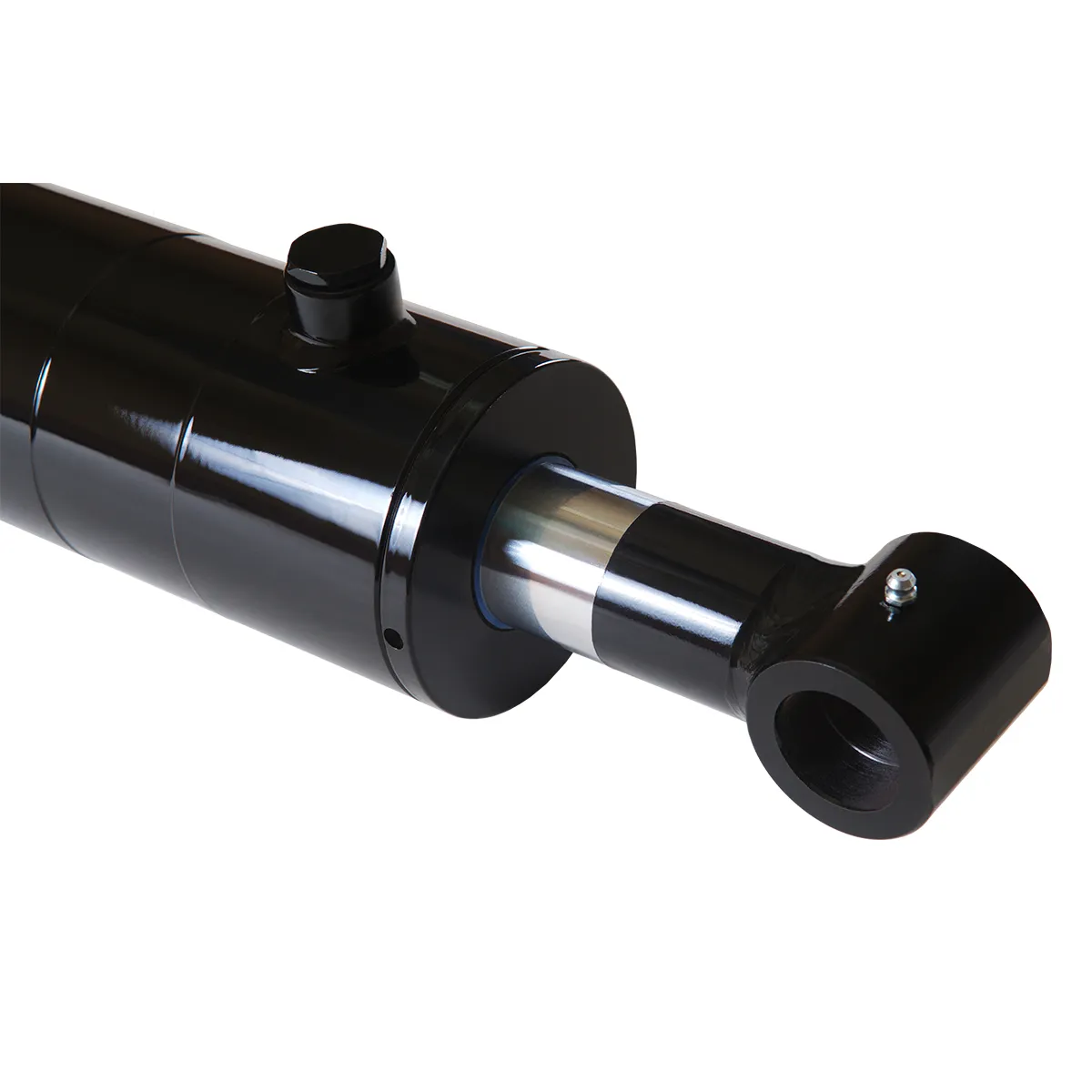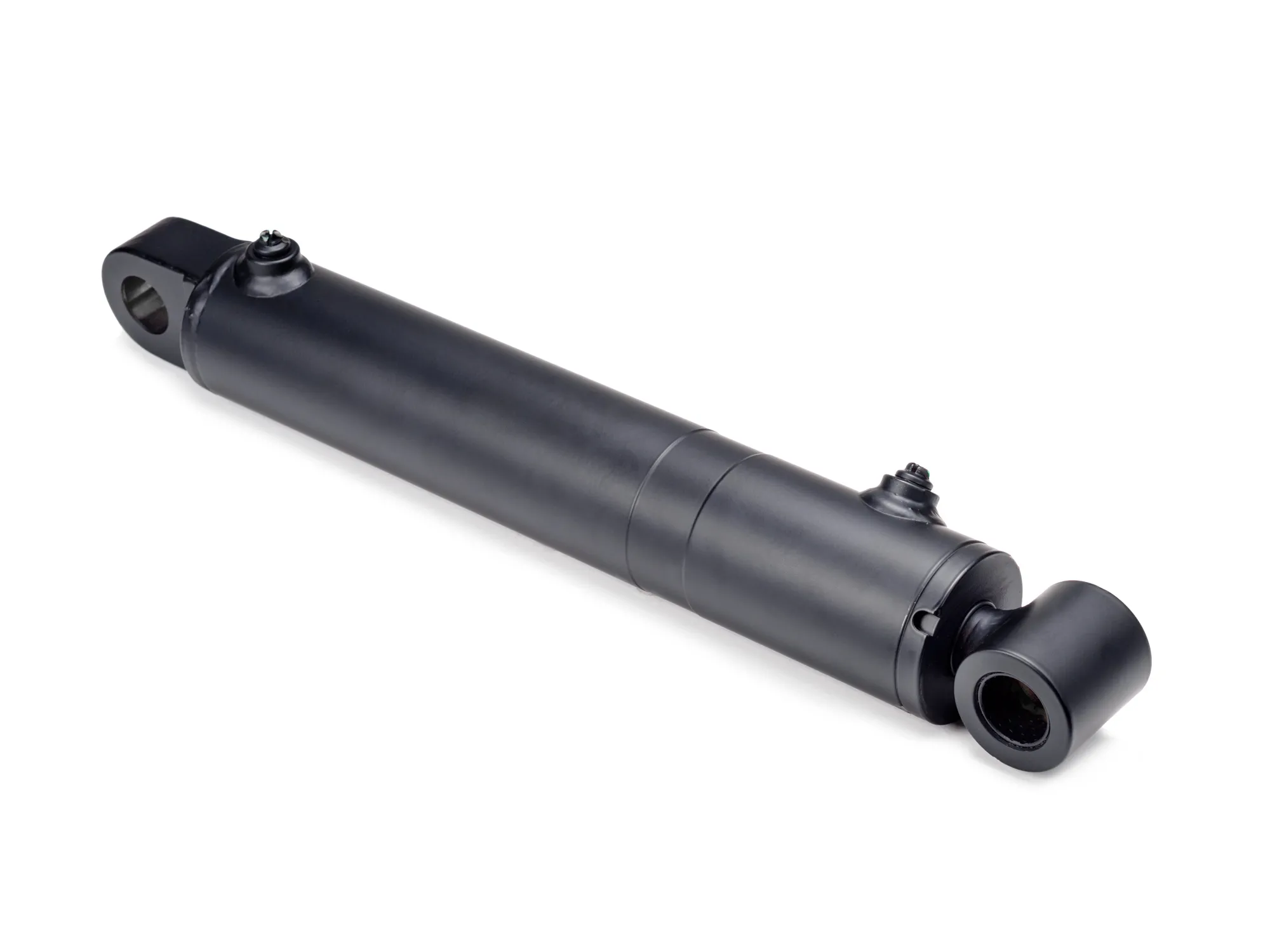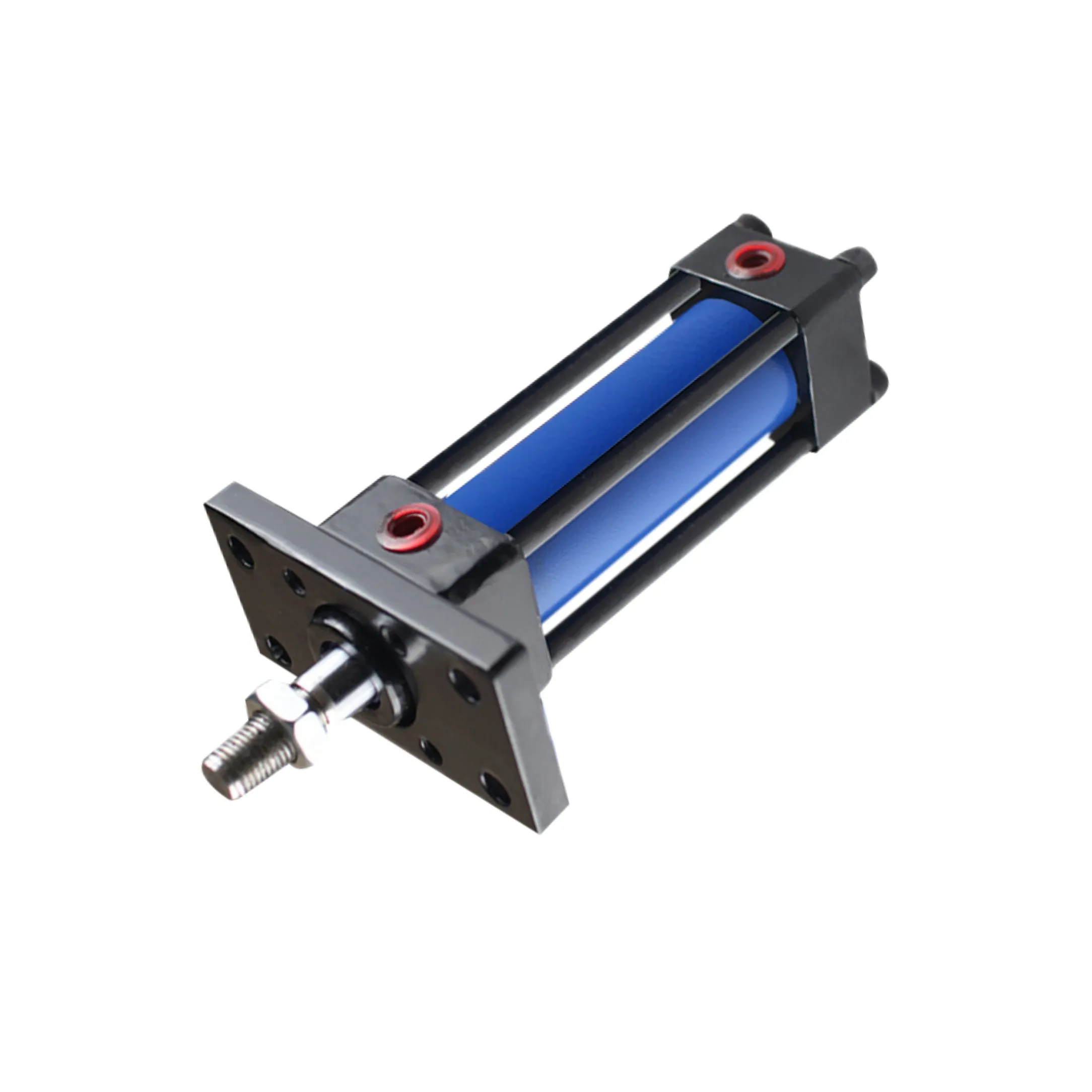The Key to Safety: Locking Single-Acting Hydraulic Cylinders
Introduction to Locking Single-Acting Hydraulic Cylinders
In the world of hydraulic systems, the locking single-acting hydraulic cylinder plays a crucial role. Operating under hydraulic pressure in one direction, these cylinders have a unique locking function that prevents movement in the absence of pressure. Let’s delve into the design and construction characteristics of these innovative cylinders.
Locking Mechanism – Safety
One of the standout features of the locking single-acting hydraulic cylinder is its safety-enhancing locking mechanism. This mechanism ensures that the piston remains securely in place even when hydraulic pressure is lost, preventing accidental retractions that could lead to dangerous situations. The locking mechanism can take the form of a mechanical lock or a hydraulic lock, depending on the specific requirements of the application.
Variety
The design of the locking mechanism in these cylinders can be customized to meet the unique needs of different applications. From spring-loaded locking devices to pin locks and other mechanical locking mechanisms, the possibilities are endless. This versatility allows for tailored solutions that prioritize safety and reliability.
Compact Structure – Space Optimization
Locking single-acting hydraulic cylinders are engineered to be compact, making them ideal for use in environments where space is limited. Their space-saving design ensures that they can be seamlessly integrated into a wide range of equipment and machinery, providing optimal performance without compromising on efficiency.
Precision Manufacturing – High-Precision Machining
When it comes to the construction of locking single-acting hydraulic cylinders, precision is key. The components of these cylinders undergo high-precision machining to ensure perfect fit and sealing, minimizing the risk of leakage. Strict quality control measures are implemented throughout the production process to guarantee the reliability and longevity of each component.
Assembly Process – Specialized Assembly
The assembly process of locking single-acting hydraulic cylinders is a meticulous task that requires the expertise of skilled technicians. Each component is carefully installed and calibrated to ensure optimal performance. After assembly, the cylinder undergoes a rigorous pressure test to verify its functionality and tightness.
Working Principle of Locking Single-Acting Hydraulic Cylinders
Understanding how locking single-acting hydraulic cylinders work is essential to appreciate their functionality. These cylinders operate using a single-acting mechanism, where hydraulic oil is pumped into the chamber to extend the cylinder and push the piston outward. The unique locking mechanism prevents the piston from retracting under load, ensuring stability even in the event of hydraulic pressure loss.
Locking Mechanism
The locking function in these cylinders can be achieved through mechanical means, such as pins or latches, or hydraulic mechanisms that maintain pressure in specific chambers. This ensures that the load remains secure and stable, enhancing safety and reliability in diverse applications.
Types and Configurations of Locking Single-Acting Hydraulic Cylinders
There are three main types of locking single-acting hydraulic cylinders, each offering unique configurations to suit different requirements. These cylinders are designed to provide efficient and reliable performance in various applications.
Type 1: Spring-Loaded Locking Devices
Spring-loaded locking devices are commonly used in locking single-acting hydraulic cylinders to ensure secure positioning of the piston during operation. These devices offer a simple yet effective locking mechanism that enhances safety and stability.
Type 2: Pin Locks
Pin locks are another popular choice for locking single-acting hydraulic cylinders, providing a robust locking mechanism that prevents accidental retractions. These locks can be customized to meet specific application needs, offering versatility and flexibility.
Type 3: Hydraulic Locking Mechanisms
Hydraulic locking mechanisms in single-acting hydraulic cylinders maintain pressure in designated chambers to prevent piston retraction. These mechanisms offer enhanced safety and reliability, making them suitable for high-pressure applications where stability is paramount.
Benefits of Locking Single-Acting Hydraulic Cylinders
Enhanced Security
The locking feature in single-acting hydraulic cylinders significantly reduces the risk of accidental retractions, improving operator safety and preventing potential hazards. This enhanced security feature is a key advantage of these cylinders in various industrial settings.
Reliability
Locking single-acting hydraulic cylinders are designed to deliver consistent performance under high loads and challenging environmental conditions. Their reliable operation ensures smooth functionality and long-term durability, making them a trusted choice for critical applications.
Simplicity
These cylinders are easy to operate and maintain, offering a user-friendly solution for diverse applications. Their straightforward design and intuitive functionality make them accessible to operators with varying levels of expertise, enhancing overall efficiency and productivity.
Application Scenarios of Locking Single-Acting Hydraulic Cylinders
Construction Equipment
Locking single-acting hydraulic cylinders are commonly used in cranes, hoists, and lifts where heavy objects need to be securely fixed in place. Their locking mechanism ensures stability and safety during lifting and lowering operations, making them essential components in construction equipment.
Manufacturing
In manufacturing processes that involve high-pressure operations, locking single-acting hydraulic cylinders play a vital role in ensuring precision and safety. These cylinders are used in presses and machinery where materials are formed under intense pressure and need to be securely fixed during processing.
Transportation
Stabilizers and jacks in vehicles rely on locking single-acting hydraulic cylinders to maintain stability and safety during maintenance or transportation. These cylinders provide essential support for vehicle maintenance tasks and ensure reliable performance in various transportation scenarios.
Aviation
Locking single-acting hydraulic cylinders are integral components of the landing gear system in aircraft, where precision and reliability are paramount. These cylinders secure the landing gear in the appropriate position during takeoff and landing, ensuring safe and smooth operations in aviation applications.
Design Considerations and Selection Criteria of Locking Single-Acting Hydraulic Cylinders
Exploring Bearing Capacity
The bearing capacity of locking single-acting hydraulic cylinders is a critical factor in determining their performance and longevity. Understanding the load-bearing capabilities of these cylinders is essential for selecting the right model for specific applications.
Sealing and Durability
The seals used in locking single-acting hydraulic cylinders, such as piston seals and rod seals, play a crucial role in maintaining efficiency and preventing leakage. Durable materials like polyurethane and nitrile rubber are commonly used to ensure long-lasting performance in challenging environments.
Safety and Maintainability
Ensuring the safety and maintainability of locking single-acting hydraulic cylinders is essential for their reliable operation. Robust design features and easy maintenance procedures contribute to the overall performance and longevity of these cylinders in various applications.
Sealing and Lubrication of Locking Single-Acting Hydraulic Cylinders
Proper sealing and lubrication are essential for the optimal performance of locking single-acting hydraulic cylinders. Quality seals, including piston seals and rod seals, are used to maintain a tight seal and prevent leakage. Regular lubrication with the appropriate hydraulic oil ensures smooth operation and prolongs the service life of the cylinders.
Regular Inspection and Preventive Maintenance Measures
To ensure the continued reliability of locking single-acting hydraulic cylinders, regular inspection and preventive maintenance are essential. Inspecting the cylinders for signs of wear or damage, replacing worn seals, and lubricating moving parts are key maintenance tasks that can help prevent costly downtime and ensure consistent performance.
Correct Installation Guide
Proper installation is crucial for the optimal performance of locking single-acting hydraulic cylinders. Following the manufacturer’s installation guidelines, ensuring correct alignment of the cylinders, and using appropriate mounting brackets are essential steps to guarantee safe and efficient operation.
Maintenance Tasks for Locking Single-Acting Hydraulic Cylinders
Regular Inspection
Regularly inspecting locking single-acting hydraulic cylinders for signs of wear, damage, or leaks is crucial for maintaining their performance and reliability. Identifying and addressing issues early can prevent costly repairs and downtime, ensuring uninterrupted operation.
Proper Lubrication
Applying the right amount of lubrication to moving parts of locking single-acting hydraulic cylinders is essential for smooth operation and longevity. Regularly checking and replenishing hydraulic oil levels can help prevent friction and wear, prolonging the service life of the cylinders.
Seal Replacement and Calibration Inspection
Replacing worn seals and conducting calibration inspections on locking single-acting hydraulic cylinders are essential maintenance tasks that should not be overlooked. Properly functioning seals and accurate calibration ensure optimal performance and prevent potential issues that could compromise safety and efficiency.
Safety Considerations and Environmental Factors
When using locking single-acting hydraulic cylinders, it is important to prioritize safety measures to prevent accidents and ensure operator protection. Adhering to safety guidelines, conducting regular maintenance, and considering environmental factors can help mitigate risks and promote safe operation in various applications.
Fault Diagnosis and Common Problems
Identifying and addressing common issues with locking single-acting hydraulic cylinders is essential for maintaining their performance and reliability. By understanding potential faults, implementing troubleshooting strategies, and seeking professional assistance when needed, operators can ensure the continued functionality of these critical components.
Unit Power of Locking Single-Acting Hydraulic Cylinders

The unit power of locking single-acting hydraulic cylinders is a key performance metric that directly impacts their efficiency and effectiveness. Several factors influence the unit power of these cylinders, including cylinder diameter, operating pressure, piston speed, and load conditions. Understanding these factors is crucial for optimizing the power output and overall performance of the cylinders.
Advantages of Optimizing Locking Single-Acting Hydraulic Power Units
Optimizing the power units of locking single-acting hydraulic cylinders can yield numerous benefits for operators and equipment manufacturers. By improving efficiency, saving energy, and enhancing reliability, optimized power units contribute to increased productivity, reduced operating costs, and extended equipment lifespan.

Questions and Answers
How does the locking mechanism in a single-acting hydraulic cylinder work?
The locking mechanism in a single-acting hydraulic cylinder functions by preventing the piston from retracting under load, ensuring stability and safety even in the absence of hydraulic pressure. This mechanism can be mechanical or hydraulic, depending on the specific design of the cylinder.
What are the main components of a locking single-acting hydraulic cylinder?
The main components of a locking single-acting hydraulic cylinder include the piston, cylinder body, locking mechanism, seals, and hydraulic fluid. These components work together to enable the cylinder to extend and retract under hydraulic pressure while maintaining a secure position when pressure is lost.
What advantages do locking single-acting hydraulic cylinders offer over standard single-acting cylinders?
Locking single-acting hydraulic cylinders offer enhanced security, reliability, and simplicity compared to standard single-acting cylinders. Their locking mechanism prevents accidental retractions, ensuring operator safety, while their robust design and ease of maintenance make them a preferred choice for various applications.

Long-Tail Keywords for Locking Single-Acting Hydraulic Cylinder
1. “Advanced Locking Mechanism in Hydraulic Cylinders”
2. “Efficient Safety Features in Single-Acting Cylinders”
3. “Enhanced Reliability of Hydraulic Cylinder Performance”
Our Company
We are a leading hydraulic cylinder replacement manufacturer with a comprehensive product line catering to domestic and international markets. Our commitment to quality, innovation, and customer satisfaction has positioned us as a trusted provider of hydraulic cylinders and related components.
Professional Service
Our team of experts is dedicated to delivering professional and reliable services to meet the diverse needs of our customers. From customized solutions to efficient production processes, we strive to exceed expectations and ensure the highest level of satisfaction.
International Certification
Our company holds international certifications that attest to our commitment to quality and excellence. These certifications demonstrate our adherence to global standards and best practices, ensuring that our products meet the highest quality and safety requirements.
Customized Solutions
We offer tailored solutions to address the specific requirements of our clients, providing customized hydraulic cylinder designs and configurations to optimize performance and efficiency. Our ability to adapt to unique challenges sets us apart as a reliable partner in the industry.
Production Equipment
Equipped with state-of-the-art production facilities and cutting-edge technology, our company boasts a robust manufacturing infrastructure that ensures precision, quality, and consistency in every product we deliver. Our advanced equipment enables us to meet the demands of a dynamic market with efficiency and reliability.
After-Sales Service

Customer satisfaction is at the core of our business, and we are committed to providing exceptional after-sales service and support. Our team is dedicated to addressing customer inquiries, resolving issues promptly, and ensuring the continued performance of our products throughout their lifecycle.
Author: lyl
